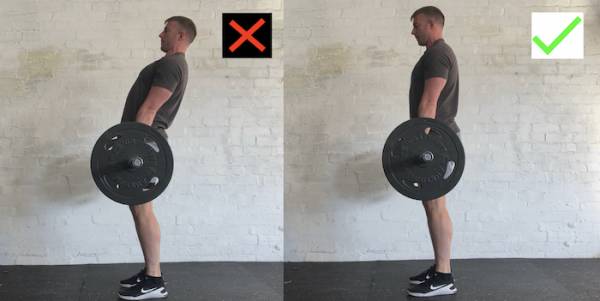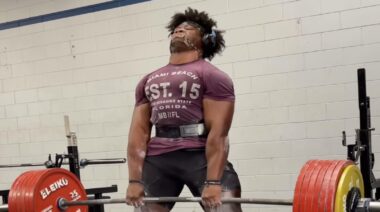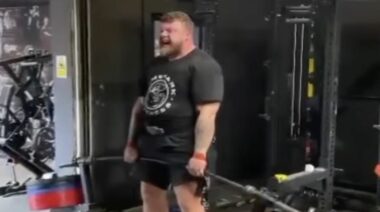When a lifter makes a technical mistake in any barbell lift, it can instantly make them weaker.
However, whereas ‘being weaker’ in the squat or the bench press could just mean having an inefficient lift and a reduced range of motion, in the case of the deadlift, this inefficiency usually results in the lower back being subjected to huge stress and puts it at risk of a catastrophic injury.
When a lifter makes a technical mistake in any barbell lift, it can instantly make them weaker.
However, whereas ‘being weaker’ in the squat or the bench press could just mean having an inefficient lift and a reduced range of motion, in the case of the deadlift, this inefficiency usually results in the lower back being subjected to huge stress and puts it at risk of a catastrophic injury.
In fact, of all the exercises (outside of the Olympic lifts), the deadlift is one that all lifters should take the time in order to dial in their technique—particularly if they’ve hurt their lower back before.
In this article, I give six cues I regularly use with clients to fix some of the most basic mistakes and instantly make their deadlift stronger and safer.
Cue #1: Shoulders Over Bar
One of the keys to a strong deadlift is a strong set-up. This can be achieved by perfectly balancing the body with the bar.
A very common mistake is for people to confuse deadlift and squat movements. Sometimes this means they have too much bodyweight behind the bar. This increases the distance between the bar and lifter’s center of mass and creates unwelcome leverages that make the weight harder to lift.
This pitfall is very easily fixed by ensuring that the lifter keeps their shoulders over the bar. This cue helps to encourage them to bring more of their body weight forward and over the bar, thus keeping them in optimal alignment.
Cue #2: Knees Against Elbows
Ok, so this cue may not directly preserve lower back integrity, but it’s a simple and often overlooked cue that can instantly boost strength by allowing you to get more from the hips, thus preserving the lower back.
By “pushing your knees against your elbows,” you place a slight stretch on the hip abductor muscles, which are then called into action during the lift as they assist in hip extension. The more muscle you can involve in the lift, the more strength you’ll have.
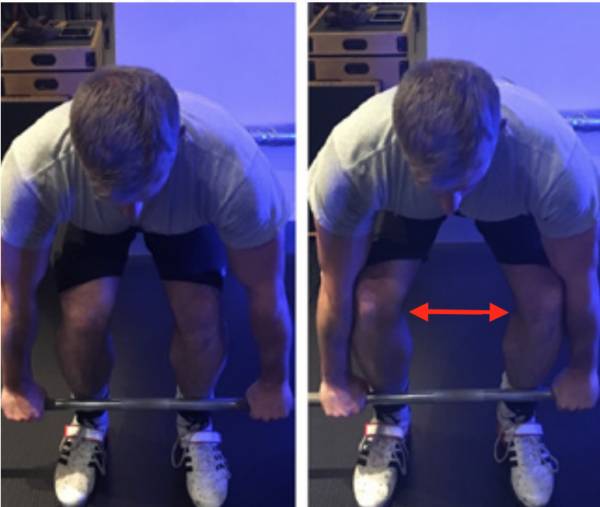
Cue #3: Take the Slack Out of the Bar
Once you’re set up in the right position, you now need to create maximal tension in the upper body so that the spine is stabilized and the lower body can do all the work.
In order to create maximal tension, you need to be contracting against some resistance. This is easily achieved by closing off the small gap that exists between the top of the bar and the plates simply by pulling it up.
I like to cue this as “taking the slack out of the bar,” but another fantastic cue I’ve heard is to get “metal on metal.”
Cue #4: Squeeze an Orange In Your Armpits
As soon as you’ve “taken the slack out of the bar,”, it’s time to create as much tension in the upper body as possible.
A very easy way to tense the lats is to imagine you’re squeezing an orange in your armpits as if you were trying to get all the juice out. Doing this will help create massive stiffness in the lats and should lock your upper body to the bar.
Now that your upper body is secured, it’s time to start the movement…
Cue #5: Drive Your Feet Into the Ground
A very common mistake in the deadlift is for lifters to try and lift the bar by using their back. This encourages lumbar hyperextension and isn’t what you want. Instead, the lower back should remain completely still—all movement should be performed by the lower body only.
Using the cue “drive your feet into the ground” will help encourage the lifter to use their lower body and take the emphasis away from extending their spine.
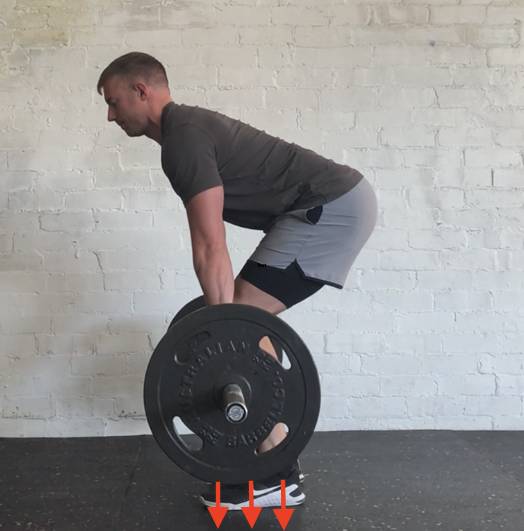
Cue #6: Stand Tall
At the end of the movement, some lifters like to finish the lift by leaning back. However, this isn’t conducive to the deadlift in any way at all and simply places a ton of unnecessary stress through the lumbar spine.
Instead, the lift should finish with both the hips and knees fully extended and no unnecessary extension in the lower back. This can be achieved with the cue “stand tall.”
By thinking about making yourself as tall and as upright as possible, it helps to encourage full extension the knees and hips, while removing the desire to lean back (which would instantly make you shorter).
